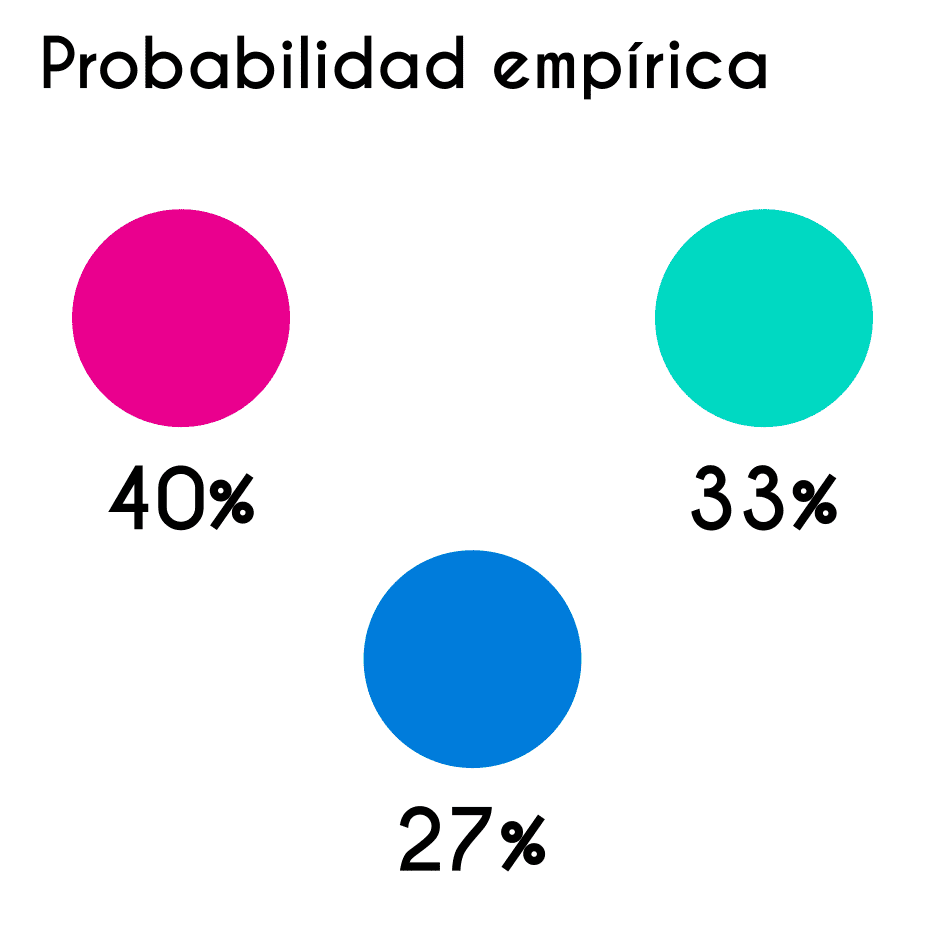Concept of the Empirical probability with Examples
This article will be about the empirical probability, how to find it with the formula with examples.
Definition of the empirical probability
The empirical probability is useful to define which of the outcomes is more likely to occur, the difference between this probability and the classical probability is that the empirical probability is obtained based on the results that we already have of an experiment that have happened several times before, this probability is mainly based on the frequency of an outcome. Before we calculate the empirical probability of an event, we need to make the experiment several times before, because the probability is found based on compiled data, so it is necessary to have the data already compiled.
Result 1
Result 2
Result 3
Result 4
Result 5
Something we have to take into account is that when we use the empirical probability, is that the more times the experiment was repeated the better, because we are going to have a more accurate answer if the times the experiment was repeated is high. And the opposite thing happens if number of repetition is low, if there is a low amount of repetitions the answer could be less accurate. When we talk about the “number of repetitions”, we can consider a low number to a number lower than 50 and we can never say that a number of repetitions is very high, because the higher the number is, the more accurate the answer will be.

The empirical probability could have a double application in casino games, for example, to predict the number we are going to get when we roll a dice, because we could think that the side that has had more coincidences is the most likely to come out, but we can also think the opposite, and is that the side of the dice that has had the least coincidences is the most likely to come out now, because it has not come out that much before, this is why we have to learn how to analyze the problems to give the answer the right interpretation depending on the situation. Just to clarify, the previous example only applies when every outcome have the same probability.
Calculate the empirical probability
To calculate the empirical probability of an outcome we are going to use the example of tossing a coin. We have to clarify that at the beginning of the event both faces have the same chances to come out (50%): 1 outcome to be obtained / 2 possible outcomes.
Results: After throwing the coin 60 times we obtained the following results.
| Result | ocation obtained |
|---|---|
| heads | 26 |
| tails | 34 |
With these results we can proceed to the next step that is obtaining the empirical probability, for that we have to use the following equation or formula:
- fo = favorable outcomes
- to = Total outcomes
- probability = fo / to
Now knowing this we can calculate the empirical probability of the previous example
- Probability of getting heads
- P(heads) = 26 / 60 * 100%
- P(heads) = 0.4333 * 100%
- P(heads) = 43.33%
- Probability of getting tails
- P(tails) = 34 / 60 * 100%
- P(tails) = 0.5666 * 100%
- P(tails) = 56.66%
Examples of empirical probability
Example 1: When we have a dice and we roll it, the chances for each side to be obtained is 16.7% each at the beginning of the experiment, but if we throw the dice 80 times we get the following results.
| Side | ocasions obtained | percentage |
|---|---|---|
| 1 | 10 | 12.5% |
| 2 | 11 | 13.75% |
| 3 | 13 | 16.25% |
| 4 | 16 | 20% |
| 5 | 18 | 22.5% |
| 6 | 12 | 15% |
With these results we can see that the side that had the most incidence is the side with the number five, because of 80 tries we obtained the side 5 18 times, measure in percentages is 22.5% of the cases, so now we can say that the side that has more chances to be obtained is the side number 5 and the least likely to be obtained is the side number 1.
Example 2: If a software system throws out a number between 1 and 4 randomly, each number has a 25% chances to come out, but when have made this experiment 50 times we have the following results.
| Number | ocasions obtained | percentage |
|---|---|---|
| 1 | 10 | 20% |
| 2 | 13 | 26% |
| 3 | 12 | 24% |
| 4 | 15 | 30% |
When we see the results we can see that the number that was obtained the most times was the number 4, because of 50 tries we obtained 15 times the number 4, this represents the 30% of all the tries, so the most likely number to be obtain is the number 4 and the least likely to be obtain is the number 1 with only a 20% of chances.
Example 3: In a game a player rolls a dice, where if the player gets a number minor o or equals to 4, then he loses a dollar, while if the number he gets is major or equals to 5, the player wins a dollar, knowing the rules of the game ¿What is the empirical probability of the results of this game (there were 200 tries)?
| Outcome | Times it came out | Percentage |
|---|---|---|
| n ≤ 4 | 122 | 61% |
| n ≥ 5 | 78 | 39% |
When we calculate the results, it is pretty clear that is not worth to play this game, because it is more likely to lose than it is to win.